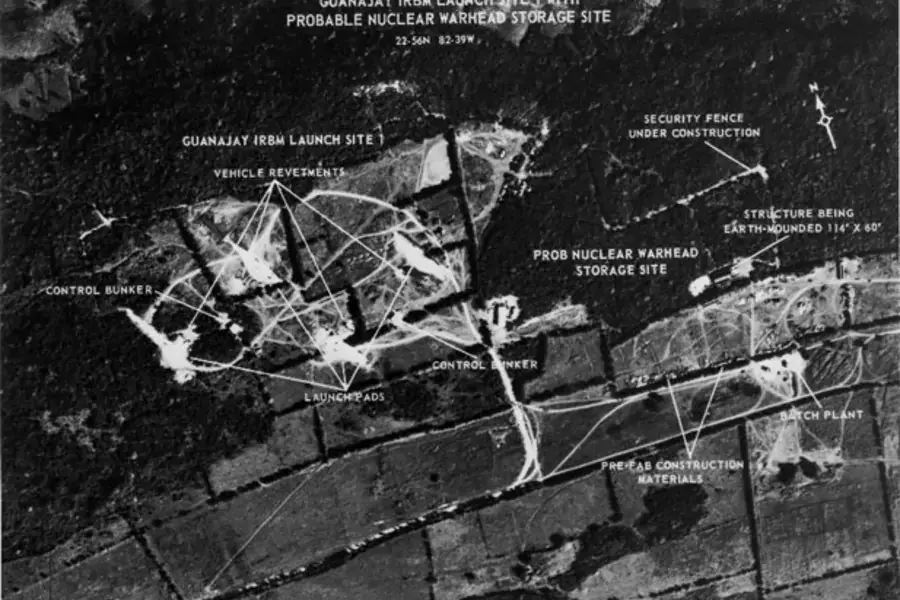TWE Remembers: JFK Solicits Ike’s Advice (Cuban Missile Crisis, Day Two)

All presidents switch roles repeatedly over the course of their day. One minute they are running meetings on complex policy choices. At the next minute they are exchanging empty pleasantries with visiting foreign dignitaries, carrying out the ceremonial duties of their office, or whipping up the passions of their fellow partisans as another election approaches. But perhaps no president ran the gamut presidential roles quite the way that President John F. Kennedy did on Wednesday, October 17, 1962.
As had been agreed the night before, most of the members of the ExCom assembled in a conference room on the seventh floor of the State Department at 8:30 a.m. to assess how to respond to the discovery of nuclear-tipped missiles in Cuba. They were joined for the first time by CIA director John McCone, who was fresh back from escorting the body of his stepson, who had been killed in a car crash in California, to Seattle for burial. Kennedy’s advisers debated why the Soviets had taken the risky and provocative step of installing nuclear missiles in Cuba. Undersecretary of State George Ball argued that Soviet leader Nikita Khrushchev had simply misjudged the ramifications of the action. Most of the other officials in the room, including McCone, insisted that the Soviet leader knew full well what he was doing and that it was part of a conscious effort to gain leverage over Kennedy in the ongoing confrontation over Berlin, where a year earlier the East Germans had built the infamous wall dividing the city.
More on:
McCone and National Security Adviser McGeorge Bundy left the meeting early to head over to the White House to brief the president. Kennedy directed McCone to go to Gettysburg, Pennsylvania to brief former president Dwight Eisenhower on the situation and solicit his advice. McCone immediately made the eighty-five mile trip. The retired five-star general agreed that the United States could not tolerate nuclear-tipped missiles ninety miles off the U.S. coast. His preliminary recommendation was military action that targeted Havana.
As McCone headed to Pennsylvania and his other advisers continued to meet and discuss possible U.S. options well into the night, Kennedy carried on with his previously arranged public schedule. At 10:00 a.m., he met with the West German foreign minister to discuss the situation in Berlin. He then attended a brief National Day of Prayer service at St. Matthew’s Cathedral. After a lunch with the Crown Prince of Libya, he flew to Connecticut to attend campaign events for Democratic candidates in the upcoming congressional midterm elections, which were then just three weeks away.
By the time Kennedy returned to Washington late that night the news from Cuba had become even more grim. Maj. Richard Heyser’s initial U-2 spy flight had found evidence that the Soviets were installing SS-4 medium-range ballistic missiles. With a range of up to 1,000 miles, they could hit cities in the southeastern United States “in an arc extending from Savannah, Georgia, to New Orleans, Louisiana.” A subsequent U-2 flight had discovered, however, that the Soviets were also installing longer range SS-5 missiles that could hit targets in every one of the forty-eight continental states but Washington. And unlike the SS-4, the SS-5 required sophisticated launch sites and support facilities, making it virtually certain that the installations were intended to be permanent and not temporary. Unless, of course, the U.S. military destroyed the missiles, or Kennedy found a way to force the Soviets to withdraw them.
For other posts in this series or more information on the Cuban missile crisis, click here.
More on:
 Online Store
Online Store